Cause of death Suicide Years active 1929–1972 | Name George Sanders Role Film actor | |
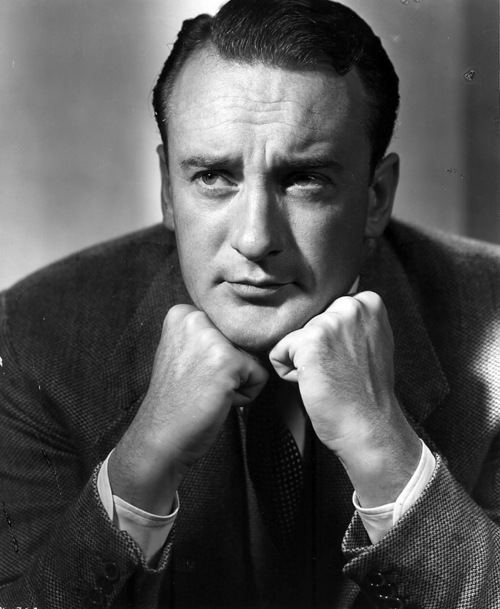 | ||
Full Name George Henry Sanders Occupation Actor, author, singer-songwriter, music composer Partner(s) Lorraine Chanel(1968–72; his death) Siblings Tom Conway, Margaret Sanders Parents Henry Sanders, Margaret Sanders Movies and TV shows Similar People Tom Conway, Zsa Zsa Gabor, Anne Baxter, Joseph L Mankiewicz, Phil Harris | ||
George sanders biography sd
George Henry Sanders (3 July 1906 – 25 April 1972) was a Russian-born English film and television actor, singer-songwriter, music composer, and author. His career as an actor spanned more than 40 years. His upper-class English accent and bass voice often led him to be cast as sophisticated but villainous characters. He is perhaps best known as Jack Favell in Rebecca (1940), Scott Folliott in Foreign Correspondent (1940) (a rare heroic part), Addison DeWitt in All About Eve (1950), for which he won an Academy Award, King Richard the Lionheart in King Richard and the Crusaders (1954), Mr. Freeze in a two-parter episode of Batman (1966), the voice of the malevolent man-hating tiger Shere Khan in Disney's The Jungle Book (1967), and as Simon Templar, "The Saint", in five films made in the 1930s and 1940s.
Contents
- George sanders biography sd
- george sanders sings as time goes by from casablanca wmv
- Early life
- Early British Work
- Hollywood and 20th Century Fox
- The Saint
- The Falcon
- A Picture Leading Man
- All About Eve
- Final Films
- Novels
- Singing
- Personal life
- Later years and suicide
- Broadway
- Notes
- Filmography
- References
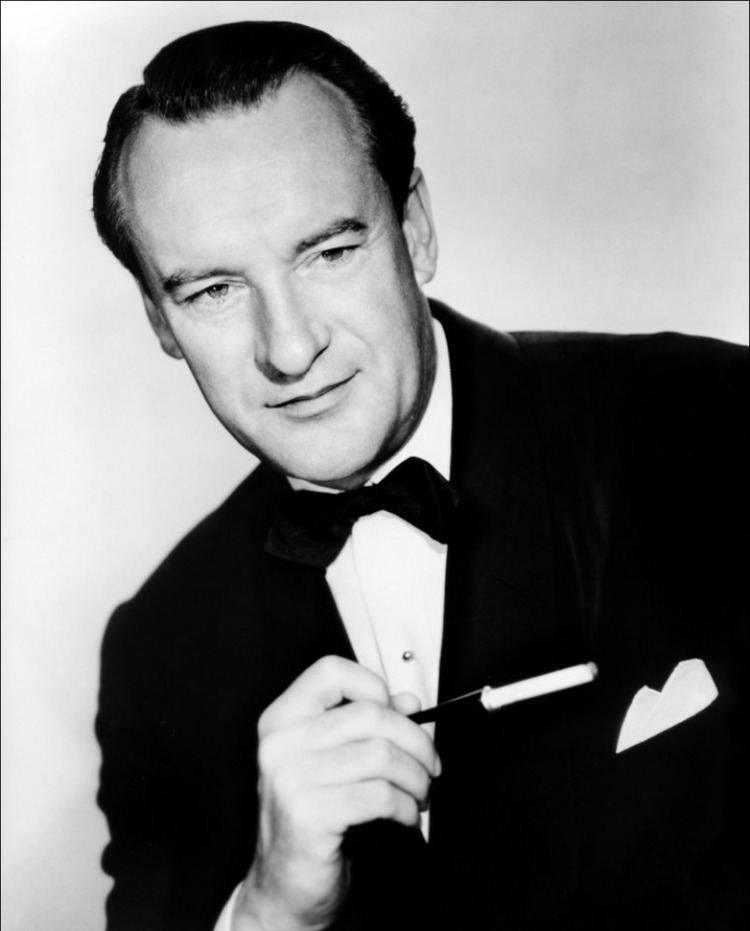
george sanders sings as time goes by from casablanca wmv
Early life
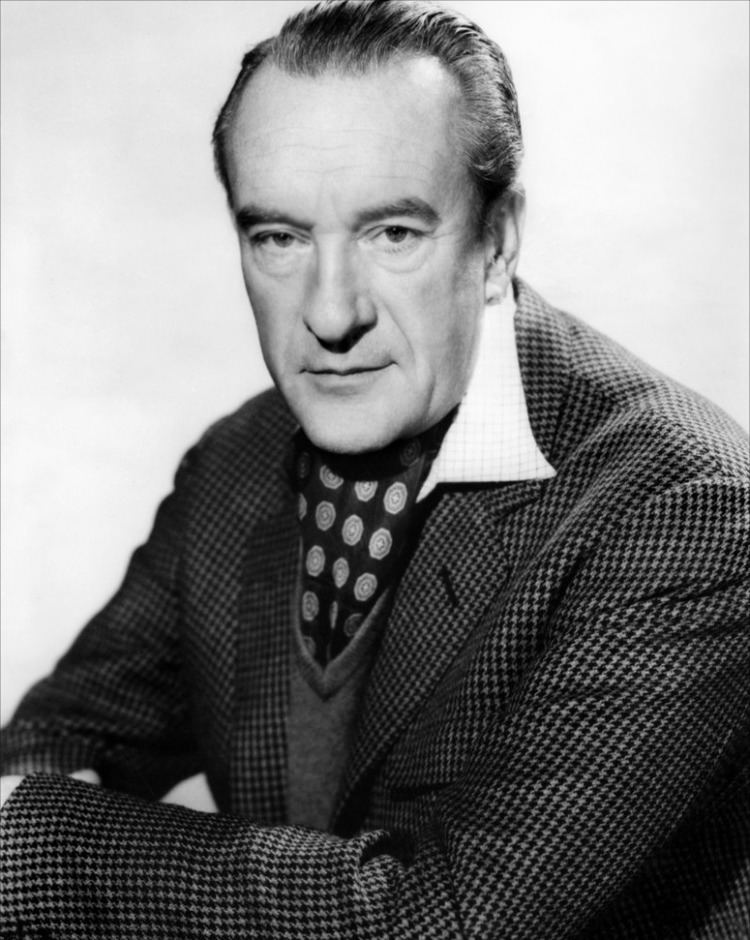
Sanders was born in Saint Petersburg, Russian Empire, at number 6 Petrovski Ostrov. His parents were Henry Peter Ernest Sanders (1868–1960), and Margarethe Jenny Bertha Sanders (née Kolbe; 1883–1967), who was born in Saint Petersburg, of mostly German, but also Estonian and Scottish, ancestry. A biography published in 1990 claimed that Sanders's father was the illegitimate son of a prince of the House of Oldenburg and a Russian noblewoman of the Czar’s court, married to a sister of the Czar. The actor Tom Conway (1904–1967) was George Sanders's elder brother. Their younger sister, Margaret Sanders, was born in 1912.
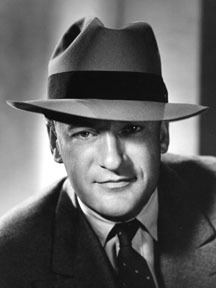
George Sanders was 11 when, in 1917, at the outbreak of the Russian Revolution, the family moved to England. Like his brother, he attended Bedales School and Brighton College, a boys' independent school in Brighton, then went on to Manchester Technical College after which he worked in textile research.
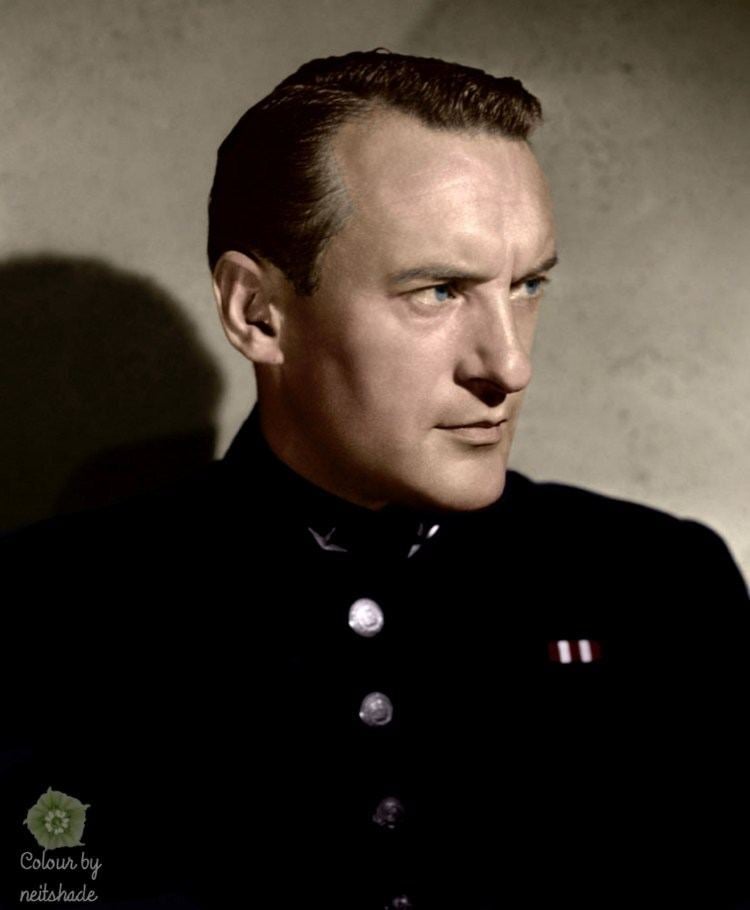
Sanders travelled to South America where he managed a tobacco plantation. The Depression sent him back to England. He worked at an advertising agency, where the company secretary, the aspiring actress Greer Garson, suggested that he take up a career in acting.
Early British Work
Sanders learned how to sing and got a role on stage in Ballhoo. He began to work regularly on stage, appearing several times with Edna Best. He was with Dennis King in The Command Performance. He had small parts in films like Love, Life and Laughter (1934), Things to Come (1936), Strange Cargo (1936), Find the Lady (1936), The Man Who Could Work Miracles (1936), and Dishonour Bright (1936).
Hollywood and 20th Century Fox
Some of these British films were distributed by 20th Century Fox who were looking for someone to play a villain in their Hollywood film Lloyd's of London (1936). Sanders was cast as Lord Everett Stacy with Tyrone Power the hero; Sanders' smooth upper-class English accent, his sleek manner and his suave, superior and somewhat threatening air made him in demand for American films for years to come.
Lloyds of London was a big hit and Fox put Sanders under a seven year contract (though he would be frequently loaned to other studios, notably RKO). He was opposite Power again in Love Is News (1937), then Fox put him in support of Wallace Beery in Slave Ship (1937) and of Gloria Stuart in The Lady Escapes (1937). Fox then gave Sanders his first lead role, in a B picture Lancer Spy (1937) with Dolores del Rio. He and del Rio were promptly reteamed in International Settlement (1938). He was second billed (to Richard Greene) in John Ford's Four Men and a Prayer (1938). Fox then had him play a villain in Mr. Moto's Last Warning (1939).
Sanders returned to Britain to make The Outsider (1939) for Associated British Picture Corporation and So This Is London (1939) for Fox.
The Saint
Sanders returned to Hollywood where RKO wanted him to play the hero in a series of B-movies, The Saint. The Saint in New York had already been made starring Louis Hayward in the title role but he decided not to return to the role. So Sanders stepped in for The Saint Strikes Back (1939), which was a solid hit.
After playing an American Nazi in Confessions of a Nazi Spy (1939) for Warners, Sanders was The Saint in London (1939). Also for RKO he was a villain in Nurse Edith Cavell (1939), as German, with Anna Neagle and Allegheny Uprising (1939), with John Wayne.
He played a double role in The Saint's Double Trouble (1940) then went to Universal for Green Hell (1940) and The House of the Seven Gables (1940).
Alfred Hitchcock wanted him for a support role in Rebecca (1940), a huge success. After The Saint Takes Over (1940) Hitchcock used him again in Foreign Correspondent (1940).
MGM used him as a villain in Bitter Sweet (1940) and he performed a similar function for Edward Small in The Son of Monte Cristo (1940). Sanders made his last appearance as Simon Templar in The Saint in Palm Springs (1941) then MGM called him back for Rage in Heaven (1941), an early film noir, playing the trustworthy good guy whose best friend, Robert Montgomery, goes murderously insane and sets him up for the rap.
He was a villain in Man Hunt (1941) but heroic in Sundown (1941).
The Falcon
RKO had been fighting with Leslie Chateris, creator of The Saint, so they stopped the series and put Sanders in a new B picture series about a suave crime fighter, The Falcon. The first entry was The Gay Falcon (1941). It was popular and quickly followed by A Date with the Falcon (1942).
At Fox he was in Son of Fury: The Story of Benjamin Blake (1942) with Tyrone Power, then it was back to The Falcon Takes Over (1942), based on Farewell, My Lovely.
MGM used him in Her Cardboard Lover (1942) and he was one of several stars in Tales of Manhattan (1942). Sanders was tiring of The Falcon so in he handed the role to his brother Tom, in The Falcon's Brother (1942), in which both appeared (and Sanders was killed off.) The only other film in which the two acting siblings appeared together was Death of a Scoundrel (1956), in which they also played brothers.
A-Picture Leading Man
Sanders played the lead in an A film, The Moon and Sixpence (1942), based on the novel by W. Somerset Maugham. He was a pirate villain in The Black Swan (1943), again fighting Tyrone Power, at Fox; the same studio used him in Quiet Please, Murder (1943) and They Came to Blow Up America (1943).
RKO called him back for This Land Is Mine (1943). He was in Appointment in Berlin (1943) at Columbia then for Fox finished his long term contract with them in Paris After Dark (1943) and The Lodger (1944), playing the romantic lead to Laird Cregar's title villain.
Sanders signed a new three-film contract with RKO, starting with Action in Arabia (1944). After Summer Storm (1944), Fox called him back to a Lodger follow up with Cregar, Hangover Square (1945).
Sanders played Lord Henry Wotton in the film version of The Picture of Dorian Gray (1945) and had the lead in The Strange Affair of Uncle Harry (1946) at Universal, and three for United Artists: A Scandal in Paris (1946), The Strange Woman (1946), and The Private Affairs of Bel Ami (1947).
Sanders the third lead in the elegiac The Ghost and Mrs. Muir (1947) with Gene Tierney and Rex Harrison in the leads. After playing the lead in Lured (1947) Fox cast him as Charles II in their expensive blockbuster Forever Amber (1949). The same studio used him in The Fan (1949). He was a villain in Cecil B. deMille's biblical epic Samson and Delilah (1949), the most popular movie of the year.
All About Eve
For his role as the acerbic, cold-blooded theatre critic Addison DeWitt in All About Eve (1950), Sanders won an Academy Award for Best Supporting Actor.
He was a leading man in Black Jack (1950) but back to support/villain roles in I Can Get It for You Wholesale (1951) and The Light Touch (1951). He starred as Sir Brian de Bois-Guilbert in Ivanhoe (1952), dying in a duel with Robert Taylor after professing his love for the Jewish maiden Rebecca, played by Elizabeth Taylor. It was a huge success.
He followed it with Assignment – Paris! (1952), a thriller; Call Me Madam (1953), a rare musical role for Sanders; Witness to Murder (1954). He starred as King Richard the Lionheart in King Richard and the Crusaders (1954).
Sanders went to Italy to appear opposite Ingrid Bergman in Journey to Italy (1954). Back in Hollywood he made several for MGM: Jupiter's Darling (1955), Moonfleet (1955), The Scarlet Coat (1955), and The King's Thief (1955) (again as Charles II.)
He was now basically a supporting actor: Never Say Goodbye (1956), While the City Sleeps (1956), That Certain Feeling (1956). He did have the lead in Death of a Scoundrel (1956) and the TV series The George Sanders Mystery Theater (1957).
After this he was in The Seventh Sin (1957), The Whole Truth (1958), From the Earth to the Moon (1958), and That Kind of Woman (1959). He worked one last time with Power on Solomon and Sheba (1959); Power died during filming and was replaced by Yul Brynner.
Sanders was in A Touch of Larceny (1960) and The Last Voyage (1960). He had a rare lead in Bluebeard's Ten Honeymoons (1960) then after Cone of Silence (1960) had the star part in Village of the Damned (1960), a surprise hit.
Then it was back to support parts: Five Golden Hours (1961), Erik the Conqueror (1961), The Rebel (1961), Operation Snatch (1962), In Search of the Castaways (1962).
He was top billed in Cairo (1963) then was in The Cracksman (1963), Dark Purpose (1964), and The Golden Head (1964). Peter Sellers and Sanders appeared together in the Pink Panther sequel A Shot in the Dark (1964). Sanders had earlier inspired Sellers's character Hercules Grytpype-Thynne in the BBC radio comedy series The Goon Show (1951–60).
He played an upper-crust English villain, G. Emory Partridge, in two episodes of The Man From U.N.C.L.E. in 1965, "The Gazebo in the Maze Affair" and "The Yukon Affair". He also portrayed Mr. Freeze in two episodes of the live-action TV series Batman, both shown in February 1966.
In films he was in Last Plane to Baalbek (1965), Trunk to Cairo (1965), The Amorous Adventures of Moll Flanders (1965), The Quiller Memorandum (1966), Warning Shot (1967), and Good Times (1967) with Sonny and Cher. Sanders last significant performance was voicing the malevolent Shere Khan in the Walt Disney production of The Jungle Book (1967).
Final Films
After being top billed in The Body Stealers (1967), Sanders was in The Girl from Rio (1968) and The Best House in London (1969). He had a supporting role in John Huston's The Kremlin Letter (1969), in which his first scene showed him dressed in drag and playing piano in a gay bar in San Francisco.
His final roles were Rendezvous with Dishonour (1971); Doomwatch (1972), a feature film version of a contemporary BBC television series; Endless Night (1972) and Psychomania (1973).
Novels
Two ghostwritten crime novels were published under his name to cash in on his fame at the height of his wartime film series. The first was Crime on My Hands (1944), written in the first person, and mentioning his Saint and Falcon films. This was followed by Stranger at Home in 1946. Both were actually written by female authors: the former was by Craig Rice, and the latter by Leigh Brackett.
Singing
In 1958 Sanders recorded an album called The George Sanders Touch: Songs for the Lovely Lady. The album, released by ABC-Paramount Records, featured lush string arrangements of romantic ballads, crooned by Sanders in a fit baritone/bass (spanning from low to middle C), including "Such is My Love", a song he had himself composed. After going to great lengths to get the role he appeared in the Broadway cast of South Pacific, but was overwhelmed with anxiety over the singing and quickly dropped out. His singing voice can be heard in Call Me Madam (1953). He also signed on for the role of Sheridan Whiteside in the stage musical Sherry! (1967), based on Kaufman and Hart's play The Man Who Came to Dinner, but he found the stage production demanding and quit after his wife Benita Hume discovered that she had terminal bone cancer.
During the production of The Jungle Book Sanders refused to provide the singing voice for his character Shere Khan during the final recording of the song, "That's What Friends Are For". According to Richard Sherman, Bill Lee, a member of The Mellomen, was called in to substitute for Sanders.
Personal life
On 27 October 1940 Sanders married Susan Larson (real name Elsie Poole). The couple divorced in 1949. From later that year until 1954 Sanders was married to Zsa Zsa Gabor, with whom he starred in the film Death of a Scoundrel (1956) after their divorce. On 10 February 1959 Sanders married Benita Hume, widow of Ronald Colman. She died in 1967, the same year Sanders's brother Tom Conway died of liver failure; Sanders had become distant from his brother because of his drinking problem. Sanders endured a further blow in the same year with the death of their mother, Margarethe.
Sanders's autobiography, Memoirs of a Professional Cad, was published in 1960 and gathered critical praise for its wit. Sanders suggested the title A Dreadful Man for his biography, which was later written by his friend Brian Aherne and published in 1979. Sanders's last marriage, on 4 December 1970, was to Magda Gabor, the elder sister of his second wife. This marriage lasted only 32 days, after which he began drinking heavily.
Later years and suicide
Sanders suffered from dementia, worsened by waning health, and visibly teetered in his last films, owing to a loss of balance. According to Aherne's biography, he also had a minor stroke. Sanders could not bear the prospect of losing his health or needing help to carry out everyday tasks, and became deeply depressed. At about this time he found that he could no longer play his grand piano, so he dragged it outside and smashed it with an axe. His last girlfriend persuaded him to sell his beloved house in Majorca, Spain, which he later bitterly regretted. From then on he drifted.
On 23 April 1972, Sanders checked into a hotel in Castelldefels, a coastal town near Barcelona. He was found dead two days later, having gone into cardiac arrest after swallowing the contents of five bottles of the barbiturate Nembutal. He left behind three suicide notes, one of which read:
Dear World, I am leaving because I am bored. I feel I have lived long enough. I am leaving you with your worries in this sweet cesspool. Good luck.
His signature appeared under the message.
Sanders's body was returned to Britain for funeral services, after which it was cremated and the ashes were scattered in the English Channel.
David Niven wrote in Bring on the Empty Horses (1975), the second volume of his memoirs, that in 1937 his friend George Sanders had predicted that he would commit suicide when he was 65, and that in his 50s he had appeared to be depressed since his marriages had failed and several tragedies had befallen him.
Broadway
Notes
^ a: Nicholas II's sister Olga Alexandrovna married Duke Peter Alexandrovich of Oldenburg, but he was born in 1868, and therefore could not have been the father of Henry Sanders.
